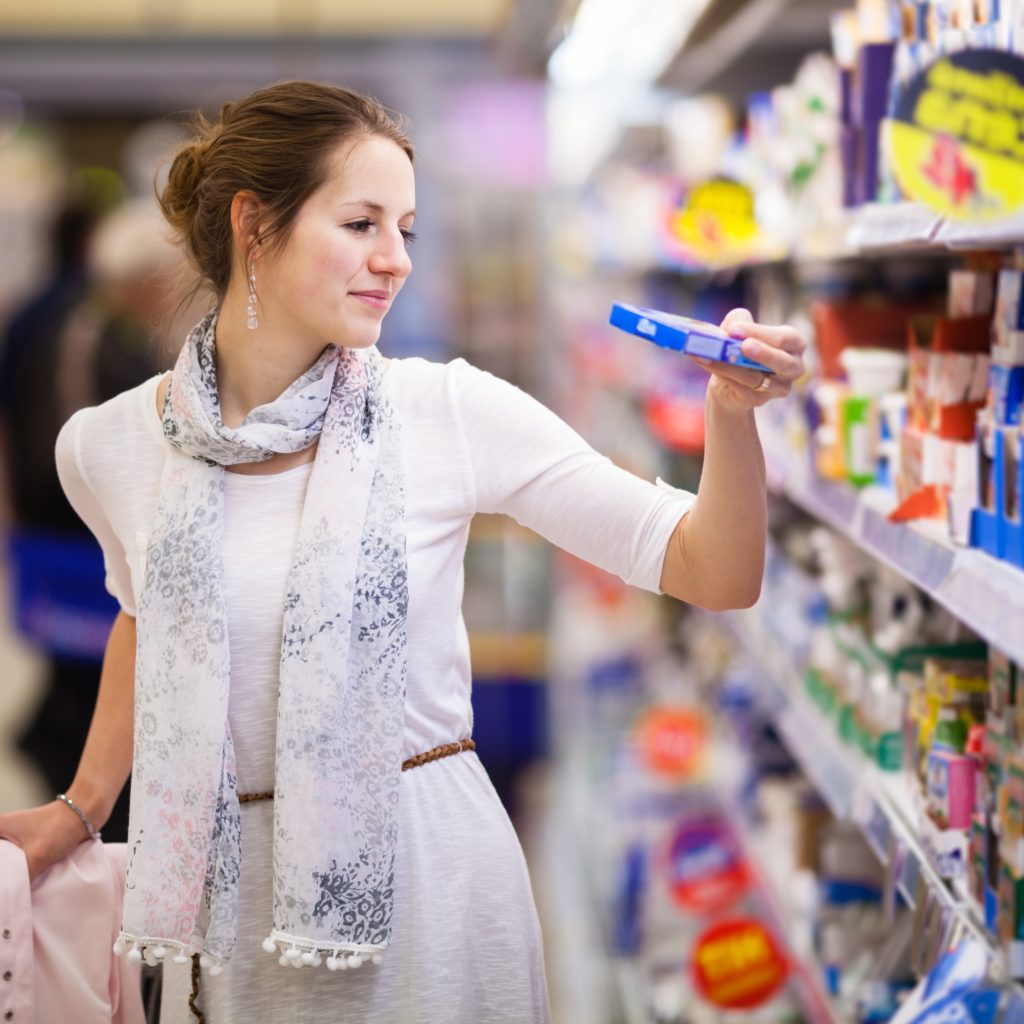
A common assessment held by analysts during the COVID-19 pandemic has been that it has not been business as usual for many sectors. Amidst economic uncertainty and a tightening credit market, merger and acquisition (M&A) activity has decelerated, leading to the postponement of a number of corporate transactions that were long in the works. Grocery retail stands out as one of the few industries where revenue and balance sheet positions improved during the crisis. As a result, some already well capitalized suppliers and retailers find themselves in a strong position to acquire distressed assets that have suddenly become available at attractive prices.
“We believe we are well positioned in an economic downturn to be an acquirer”, Matt Farrell, the CEO of Church & Dwight, maker of well-known household brands such as Arm & Hammer baking soda and OxiClean, stated in early May. “We have a very strong balance sheet. … the window is open.”
More recently, Albertsons, the second-largest grocery chain in the US, launched an Initial Public Offering (IPO) of its shares on the New York Stock Exchange. In an interview with CNBC, CEO Vivek Sankaran noted that “Albertsons is a company that was built through M&A’, adding that “we believe that we have a strength in M&A, and we use these opportunities to deliver value post-acquisition. At the same time, we also look to continue to deliver value through our current assets, which we believe are outstanding in strength”.
Good financial fortune, however, has not been shared across the board, with some clear winners and losers emerging. Some CPG companies – in particular, those holding brands in non-essential categories – and retailers with significant non-food portfolios are finding themselves cash strapped and are looking to offload assets that are not core to their business. The end result could bring a spike in industry consolidation, with the largest players broadening their grip on the market.
More established players with deeper pockets are not only looking to acquire competitors but are also looking at up and downstream opportunities to obtain operational know-how and technology that they do not currently possess. This is especially the case with e-commerce where in recent months the likes of Amazon, Kroger and Albertsons have all sought to acquire or partner with technology companies in order to leverage their online platforms and artificial intelligence fulfillment capabilities.
Seeking Synergies
In 2015, Loblaws, Canada’s largest food retailer, purchased Shoppers Drug Mart (Shoppers), the country’s largest pharmacy chain, for $12.5bn CDN. The deal at the time marked the largest corporate transaction in the country’s history. The move was intended to add scale and operational efficiencies to contend with US giants such as Walmart that were expanding aggressively north of the border. It also reinforced the degree to which retail channels were blending. Today, most Shoppers’ locations carry a broad range of food products, while Loblaws’s various supermarket banners have extensive health and beauty sections carrying Shoppers’ successful private label “Life” brand.
South of the border, leading food retailer Kroger and drug store giant Walgreens embarked on a pilot collaboration in late 2018. A selection of Walgreens stores began stocking more perishables, refrigerated products and dry groceries; of which 30% were made of up of Kroger store brands. In exchange, Kroger stores reconfigured their in-store pharmacies with Walgreen’s signage and retailer own label products. One year later, the two companies announced a procurement alliance to improve purchasing power and stimulate private label innovation.
Complementary offline retailers were not the only ones looking to partner with or acquire access to additional categories and channels. In 2017 Amazon US purchased Whole Foods Market for nearly $14mn USD as a means of acquiring physical stores and cold-chain distribution nodes.
Offloading Non-Core Assets
Turning to the current day economic reality, recent industry transaction headlines involve manufacturers and retailers looking to offload, rather than add, holdings that fall outside of their core business. A survey recently conducted by the M&A Leadership Council featuring C-level executives found that 23% of respondents are currently expecting to undertake divestitures in order to raise cash that will be used to service debt or fund strategic investments in post-Covid growth opportunities. Last month, Germany’s Metro Group completed the sale of its hypermarket subsidiary Real to the SCP Group in a move to focus more attention on its core wholesale business. The SCP Group, an international private equity firm, will be selling off the banner’s 276 stores to other German grocery retailers including Rewe, Edeka and Kaufland. Save A Lot, the second largest discounter in the US after Aldi, is similarly looking to offload its corporately owned and licensed stores in order to strengthen its focus on its distribution business. With around 1,000 stores on offer, the company expects to earn approximately $3.3bn from the sell-off. For its part, Walmart Canada is tightening its focus by closing down the 106 Tire & Lube Express service centers that it operates across the country. Adam Grachnik, the company’s Canadian director of Corporate Affairs, recently stated that the closure “will allow us to … deliver on our core business of food, consumables, health and wellness, fashion and general merchandise”.
Diversified retail groups are also looking to reverse course geographically. Tesco, the world’s third largest retailer, is exiting Poland after selling off its 301 stores to Denmark’s Salling Group for GBP181mn. The company has stated that the divestiture will allow it to heighten its Central European focus on the Czech Republic, Hungary and Slovakia where it enjoys stronger market share. The sale follows a decision by the British supermarket giant to exit Thailand and Malaysia after selling off its 2,000 stores to Thai conglomerate CP Group in March for $10.6bn.
Amidst a climate of economic unrest, retailers are not the only ones contemplating cashing in on lesser performing divisions to strengthen balance sheets and reallocate capital towards more profitable units. With a heavy presence in struggling emerging markets and a strong reliance on the sluggish foodservice channel, Unilever’s food division has not fared as well as its home and personal care (HPC) side of the business. The company’s combined foods and refreshment division accounts for around one-third of its annual operating profit, with HPC accounting for the larger two-thirds contribution. With demand for personal hygiene products on the rise, analysts believe that the company could look to unload some of its food brands in order to invest in faster growing HPC categories.
On the Hunt for E-Commerce Capabilities
Since January, 355 US retailers have filed for bankruptcy according to Bankruptcydata.com, with the majority being in the fashion, apparel, and footwear segments. Amazon, with roughly $27bn cash in hand, is rumoured to be coming in with an offer for J.C. Penney after the midmarket department store chain filed for bankruptcy protection last month. Similar to how Amazon has utilized Whole Foods’ store network as fulfilment centres to meet expanding demand for grocery delivery as households shelter at home, J.C. Penney’s 846 store properties could be used as distribution centres to reinforce the e-tailer’s ability to meet growing demand for online apparel. According to a study by McKinsey, Food, Drug, and Mass-merchandise (FD&M) retailers have not only been the least negatively impacted by the crisis, but they also stand to benefit from relatively low financial leverage, cash-heavy balance sheets, and access to investment grade debt.
Consumers the world over have been shifting to shopping online since the pandemic took hold. This has driven home and expedited the importance of retailer’s strengthening their e-commerce capabilities. For cash rich retailers, acquiring or partnering with back-end fulfillment platforms and last mile distribution players is seen as a faster route-to-market than developing these capabilities organically. South Korea’s “big three” retail groups – Lotte Shopping, Shinsegae Group and Hyundai Department Store – have been struggling to keep pace with online demand at the same time as the country’s largest online retailer, Coupan, has been aggressively expanding its warehouse footprint. It has been reported that all three groups are currently looking to acquire logistics companies. E-Mart, a subsidiary of Shinsegae Group and the country’s largest retail banner, has expressed an interest in purchasing the country’s fourth largest logistics firm Logen. Rumours have also surfaced that both Shinsegae and Lotte Shopping could be making bids for eBay Korea. With three popular online shopping malls connecting sellers and buyers under its portfolio, eBay is the largest online platform company in the Korean market with a valuation of approximately $4bn.
In the US, Walmart recently enhanced its third-party marketplace capabilities by partnering with Canadian e-commerce shopping platform Shopify. In an alliance announced on June 16th, the deal is intended to add 1,200 small and medium businesses onto Walmart.com’s third-party marketplace by the end of the year. The appeal for a retailer of selling off of a third party marketplace that they host compared with their own fully integrated online site is that they are able to capture a share of the sale while all inventory and fulfillment costs are absorbed by the seller. Kroger, the US’s largest offline grocer, is aiming to bolster its online grocery fulfillment capabilities by leveraging the artificial intelligence expertise of the UK’s Ocada; the world’s largest pureplay grocery retailer. The partnership will involve the opening of twenty Ocado-powered, robotics-driven customer fulfillment centers (CFCs) by the end of 2021. Albertsons is also looking externally for technology to enhance its e-commerce offering. In early June it announced that its subsidiary United Supermarkets has partnered with location-based tech company Radius Networks to utilize is machine-learning platform for improved curbside pickup management.
Advantage Perspective
Despite the prevailing economic uncertainty, M&A activity within the grocery retail sector will likely pick up even further as retailers and brands in strong financial positions spot strategic acquisition opportunities. In an increasingly omnichannel world, there is also likely to be an arms race for technology platforms as both off and online retailers look to enhance their back and front-end infrastructure through partnerships and acquisitions.
According to findings from McKinsey based on the 2008 financial crisis, companies that outperformed during the recession participated in more deals (+10%) and in larger deals (approximately 1.8 times larger) than companies that underperformed during the downturn. Additionally, the study concludes that retailers who can make strategic investments through a down cycle will stand to outperform their competitors over the long term. While M&A opportunities that present themselves during economic crisis can be financially lucrative in the short term, it is critical to ensure that the business-to-business collaboration and customer focus originally borne and developed by both parties does not become impaired throughout the process.
Consolidation is often viewed as a negative for consumers based on the premise that less competition results in less choice. However, if acquisitions and partnerships are undertaken with changing consumer patterns and preferences in mind, this does not have to be the case. As examples:
- Tesco exiting Poland and South East Asia will allow it to become a leaner organization in its home market (UK) as it recognizes that shoppers are looking for lower prices during recessionary times.
- Walmart partnering with Shopify to strengthen its third-party marketplace offering in the US provides stiffer domestic competition to Amazon.
- Kroger and Albertsons’ partnerships with technology specialists should make it easier for their customers to purchase online with an improved experience in terms of website functionality, product availability and order fulfillment.
- Metro Germany selling off its supermarkets to Rewe, Kaufland and Edeka in order to focus more attention on its wholesale business should result in German shoppers being better serviced by retailers who understand and are invested in the core channels in which they operate.
Sources
- Southeastern Grocers Selling 62 Stores to Food Lion, Dissolving Bi-Lo Banner
- Walmart teams with Shopify to grow its marketplace
- The United Family Launches Location-Based Curbside Solution
- Kroger plans three more Ocado automated warehouses
- Walmart closing all Tire & Lube Express centres in Canada
- New directions at Nestlé as it explores sale of North American water brands
- Save A Lot Lands New Credit Facility
- Tesco sells Polish supermarket business
- Argentina: Walmart stops searching for a local partner due to coronavirus
- Amazon’s Next Big Move? It Should Buy Macy’s
- Instacart and C&S Wholesale Grocers Partner to Offer Ecommerce Solutions to Network of Independent Grocers
- What M&A Looks Like During the Pandemic
- “The genie is out fo the bottle” – what would Unilever’s unification mean for food?





